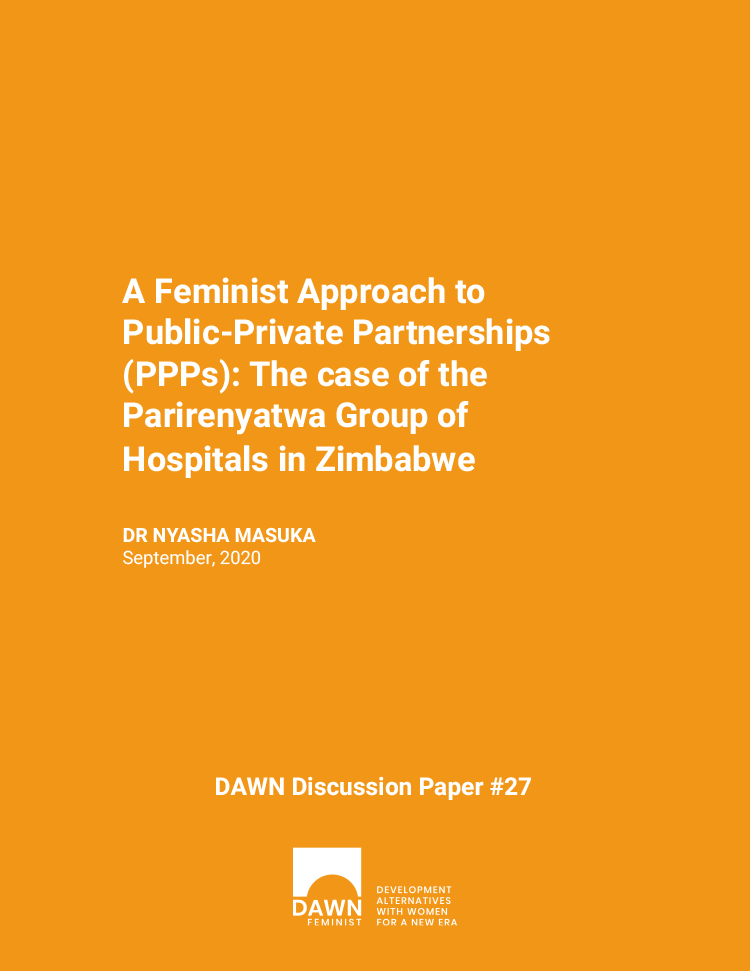Abstract
Background
I argue in this paper that all the Public-Private-Partnerships (PPPs) being implemented in the Zimbabwean health sector do not actively mainstream gender equality. The PPPs that currently exist in public hospitals were not consistently guided by any regulatory framework and where it existed the process did not strictly abide by the regulatory framework. Most of the PPPs are based on Memorandum of Understanding (MOU) that are not enforceable and were not guided by adequate legal advice nor participation by main actors affected by the PPPs. The PPPs were introduced as a panacea to the reduction in public health spending caused by the adoption of Structural Adjustment Programs (SAPs) by the Zimbabwean government at the behest of the IMF and World Bank in the mid-90s.
Methodology
I conducted desk reviews of available literature on Public Private Partnerships in the health sector in Zimbabwe and Sub-Saharan, Low Income Countries (LICs). Key words were “Public Private Partnerships”, “Gender Equality”, “Zimbabwe”, Health Sector, LICs and Sub-Saharan Africa. I reviewed legislation for public health and gender equality including national policies and strategies for health and gender equality and legislation governing Public Private Partnerships in the health sector in Zimbabwe. I conducted Key Informant Interviews, with CEOs, Clinical Directors, clinicians, professional health associations, health care professionals working in public hospitals and civil society organizations to understand their experiences and opinions about the five PPPs at Parirenyatwa Group of Hospitals. I also referred to media articles on announcements and opinions about PPPs in the health sector by the different actors involved in support of or aggrieved by PPPs.
Findings
Three waves of socio-economic developments (a period of high public expenditure on health from 1980-1990, secondly a period of liberalization and privatization from 1990-2000 and thirdly a period of economic downturn from 2000 to date) shaped the health sector in Zimbabwe. The period of high public expenditure resulted in marked improvement in health service coverage and health outcome indicators. This was reversed during the second and third waves after implementation of SAPS in the mid-90s. Reduction in public spending on social services and direction of funding to the private sector was done without consideration of gender equality and human rights. Public Private Partnerships were introduced in public hospitals as a way of mitigating against the reduction in public funding. This resulted in PPP contracts at Parirenyatwa Group of Hospitals without involvement of all the relevant actors neither was there consideration for gender equality. Implementation of the PPPs has also not been transparent and accountable as evidenced by many acts of resistance by health care professionals, legislators, civil society and the general public. The resistance resulted in cancellation of all PPPs in public hospitals in July 2020.
Recommendations
- Zimbabwe should develop a compulsory National Health Insurance Scheme funded through taxation and support from health development partners
- The scheme should prioritize coverage for essential health services for vulnerable populations especially women, children and indigents
- The Joint Ventures Partnerships Act and the Zimbabwe Investment Act should be adapted to PPPs in the health sector with involvement of all actors with consideration for gender equality and human rights and enforcement of legal frameworks in a transparent manner.

